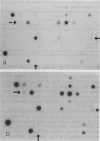Abstract
An immune dot blot test (IDBT) to detect the genus specific lipopolysaccharide chlamydial antigen is described, in which the antigen is trapped on nitrocellulose membrane and then detected with a monoclonal antibody labelled with 125iodine. A preliminary comparison of 270 specimens obtained from the endocervix or male urethra showed that the IDBT was more sensitive (sensitivity 90%) than a commercial amplified enzyme immunoassay named IDEIA (sensitivity (60%) for detecting specimens that yielded Chlamydia trachomatis on culture. Subsequent assessment of 950 urogenital tract specimens in the IDBT and by culture confirmed the sensitivity (92%) and specificity (95%) of the IDBT. At least one of 56 specimens obtained from the eye, however, gave a false positive result, which was probably due to staphylococcal protein A in the specimen. The IDBT provides the basis for a novel simple test for detecting the genus Chlamydia.
Full text
PDF
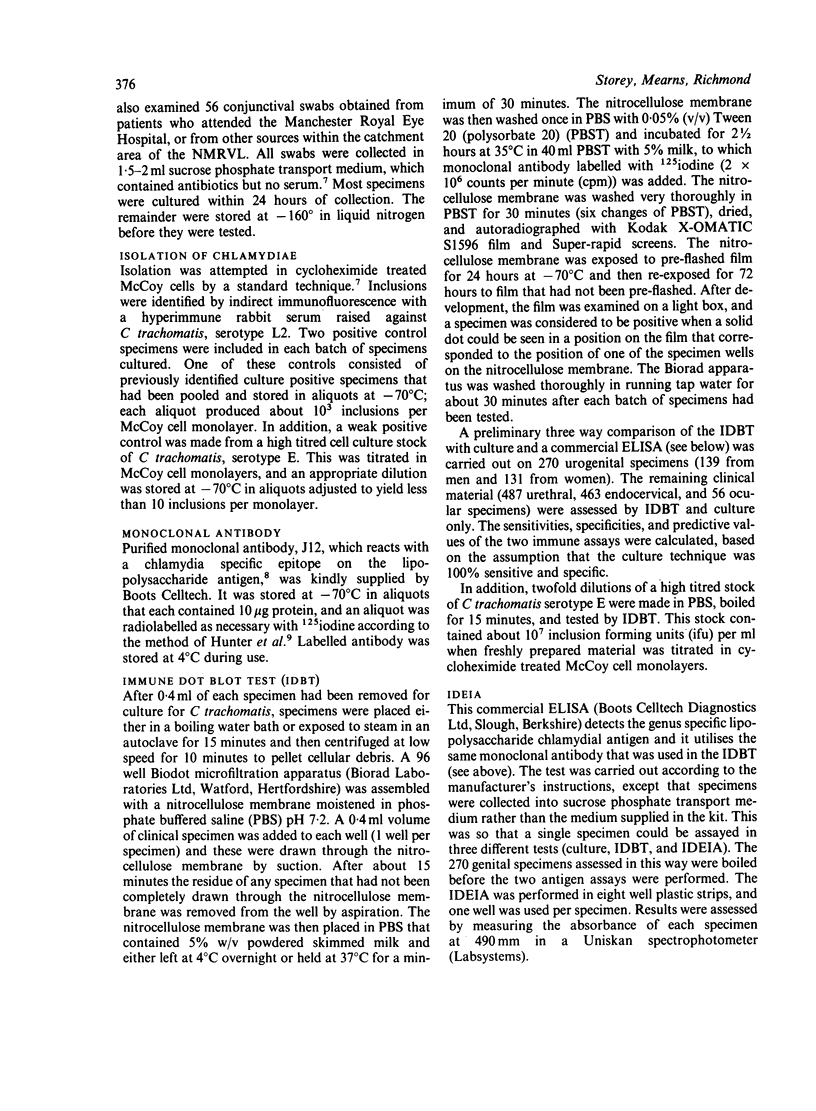
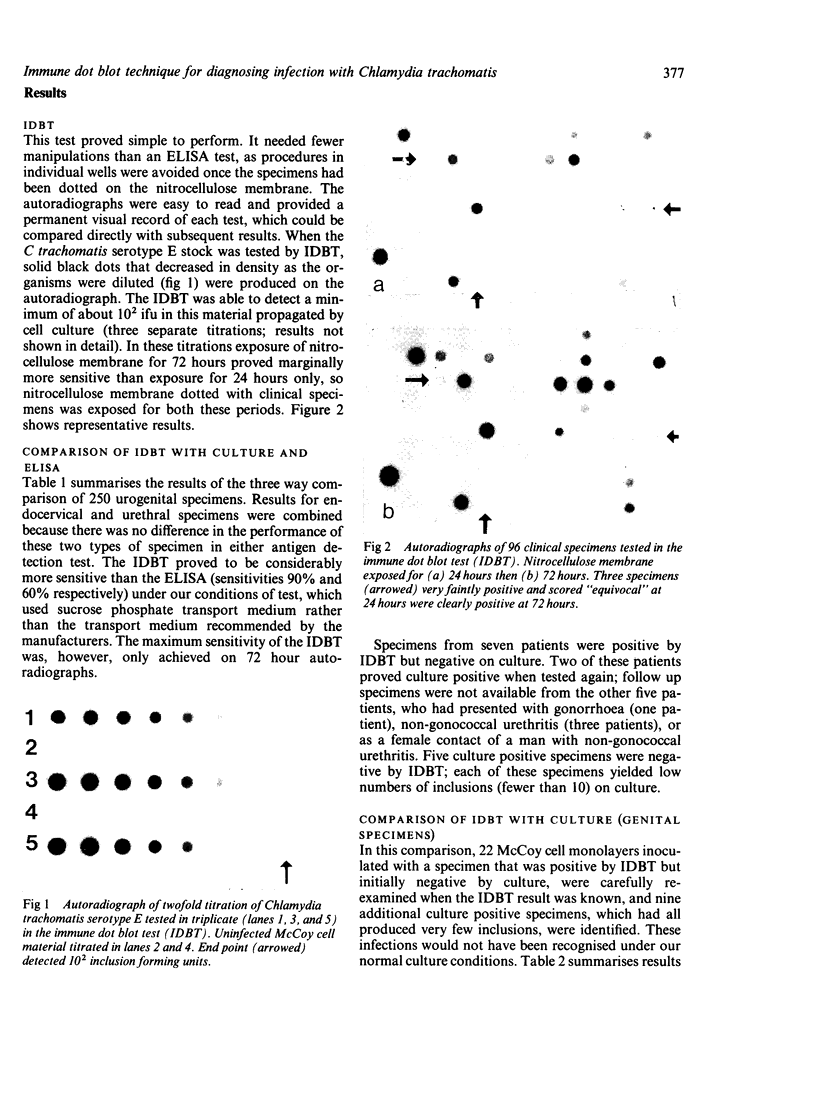
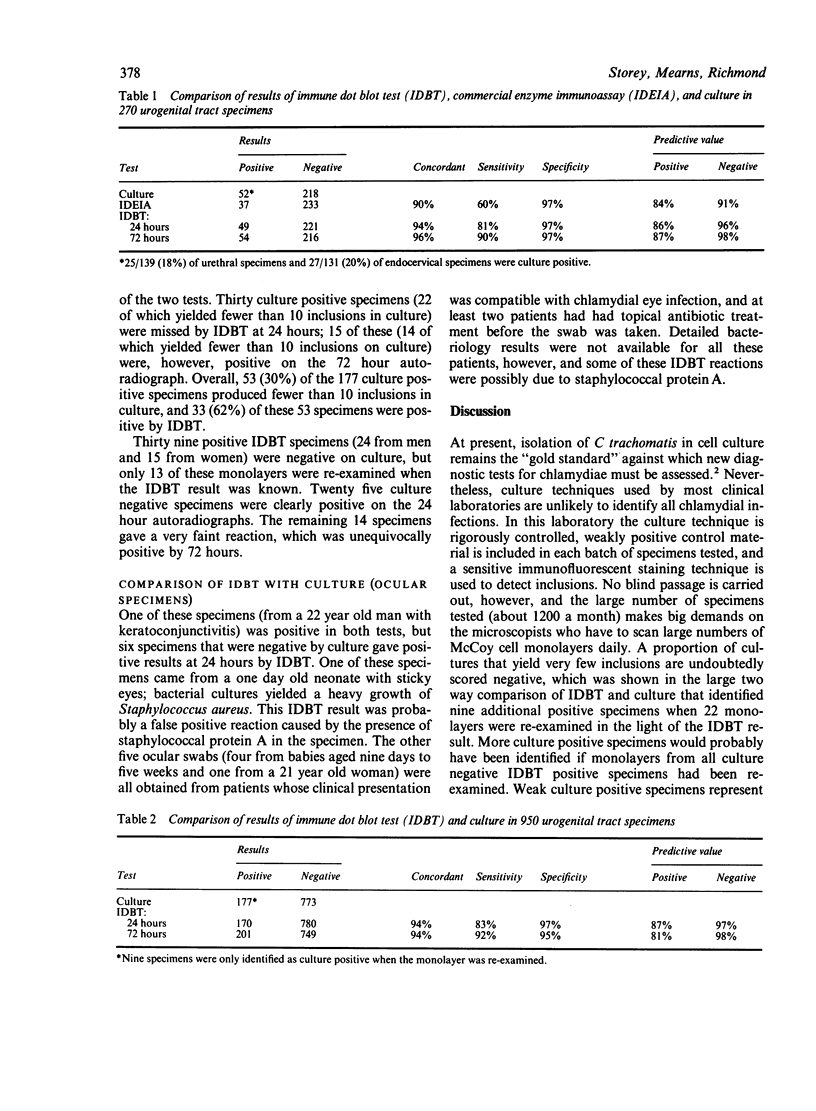
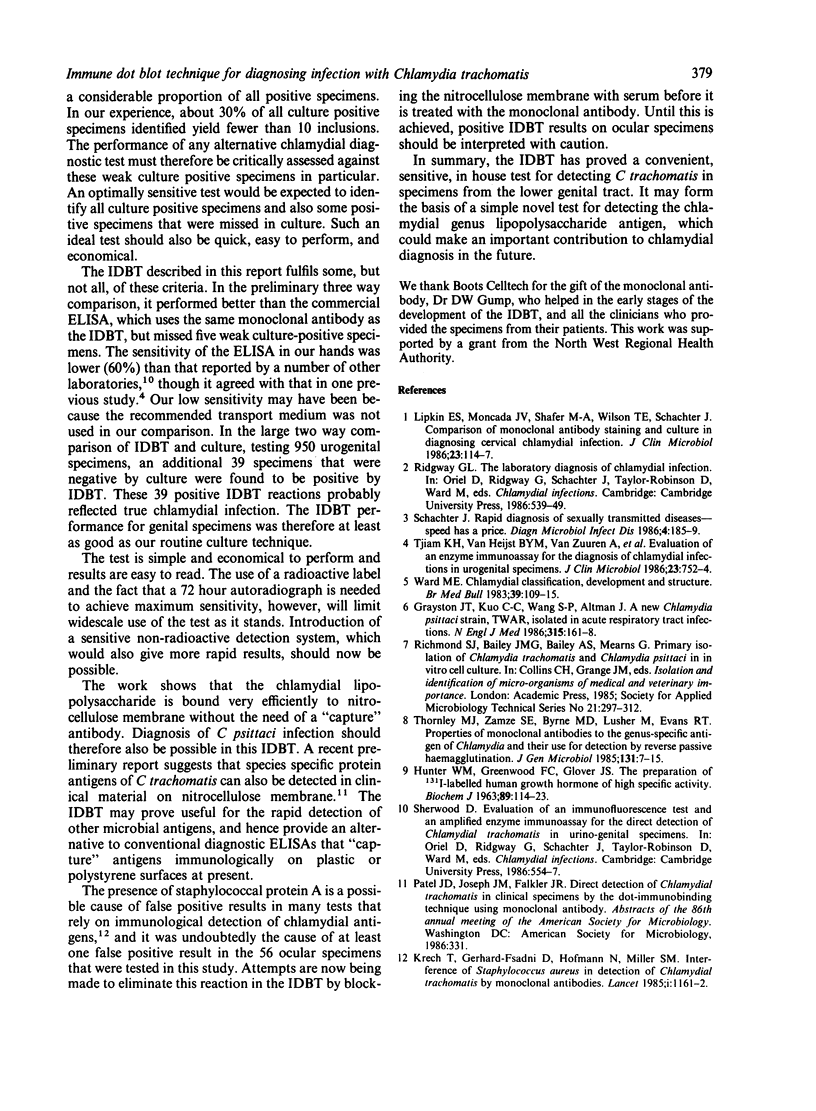
Images in this article
Selected References
These references are in PubMed. This may not be the complete list of references from this article.
- Grayston J. T., Kuo C. C., Wang S. P., Altman J. A new Chlamydia psittaci strain, TWAR, isolated in acute respiratory tract infections. N Engl J Med. 1986 Jul 17;315(3):161–168. doi: 10.1056/NEJM198607173150305. [DOI] [PubMed] [Google Scholar]
- Krech T., Gerhard-Fsadni D., Hofmann N., Miller S. M. Interference of Staphylococcus aureus in the detection of Chlamydia trachomatis by monoclonal antibodies. Lancet. 1985 May 18;1(8438):1161–1162. doi: 10.1016/s0140-6736(85)92467-5. [DOI] [PubMed] [Google Scholar]
- Pfaller M. A., Bale M. J., Schulte K. R., Koontz F. P. Comparison of the Quantum II Bacterial Identification System and the AutoMicrobic System for the identification of gram-negative bacilli. J Clin Microbiol. 1986 Jan;23(1):1–5. doi: 10.1128/jcm.23.1.1-5.1986. [DOI] [PMC free article] [PubMed] [Google Scholar]
- Schachter J. Rapid diagnosis of sexually transmitted diseases--speed has a price. Diagn Microbiol Infect Dis. 1986 Mar;4(3):185–189. doi: 10.1016/0732-8893(86)90097-0. [DOI] [PubMed] [Google Scholar]
- Thornley M. J., Zamze S. E., Byrne M. D., Lusher M., Evans R. T. Properties of monoclonal antibodies to the genus-specific antigen of Chlamydia and their use for antigen detection by reverse passive haemagglutination. J Gen Microbiol. 1985 Jan;131(1):7–15. doi: 10.1099/00221287-131-1-7. [DOI] [PubMed] [Google Scholar]
- Tjiam K. H., van Heijst B. Y., van Zuuren A., Wagenvoort J. H., van Joost T., Stolz E., Michel M. F. Evaluation of an enzyme immunoassay for the diagnosis of chlamydial infections in urogenital specimens. J Clin Microbiol. 1986 Apr;23(4):752–754. doi: 10.1128/jcm.23.4.752-754.1986. [DOI] [PMC free article] [PubMed] [Google Scholar]
- Ward M. E. Chlamydial classification, development and structure. Br Med Bull. 1983 Apr;39(2):109–115. doi: 10.1093/oxfordjournals.bmb.a071800. [DOI] [PubMed] [Google Scholar]




